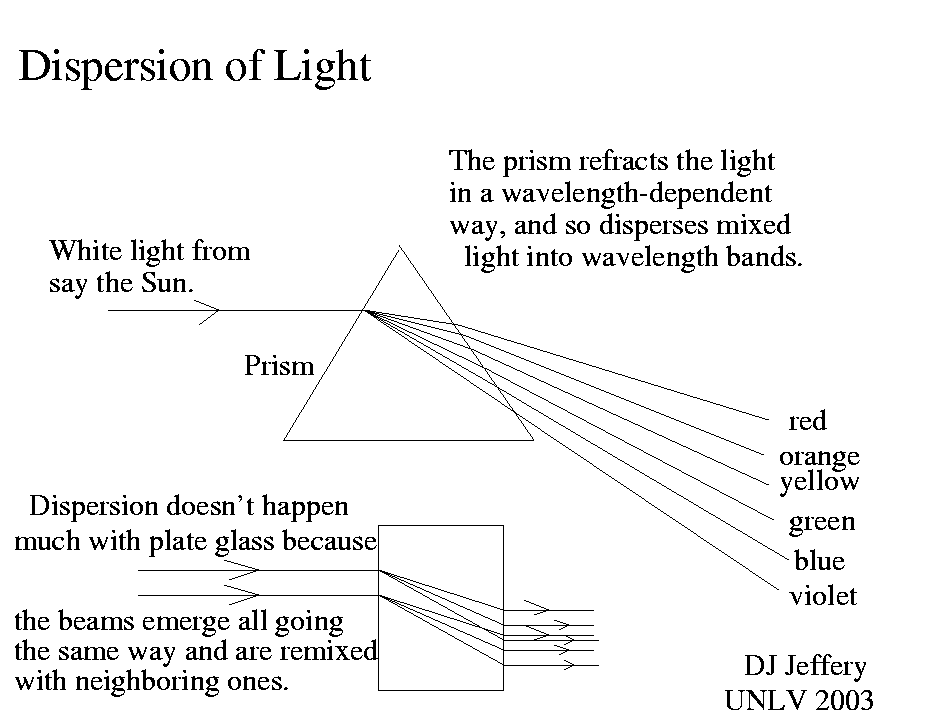
Caption: A diagram illustrating the dispersion of a light ray by a prism and plate glass.
Features:
- Snell's law
(AKA the law of refraction) is
n_1*sin(θ_1) = n_2*sin(θ_2) ,
where the n_i are the refractive indexes n = c/v_i (where c is the vacuum light speed c = 2.99792458*10**8 m/s and v_i is the light speed in medium i: c ≥ v_i) and the θ_i are the angles of light ray from the normal (i.e., the perpendicular) to the medium interface.Note
sin(θ_2) = (n_1/n_2)*sin(θ_1) ,
and so θ_2 subceeds/exceeds θ_1 if n_2 is greater/lesser than n_1.Most common transparent solids and liquids have n_i greater than n_air, and so light rays bend toward/away the normal when entering/leaving these common materials.
- Refractive indexes
are generally wavelength
dependent.
In particular, common
transparent
solids and
liquids
have refractive indexes
that are noticeably wavelength
dependent.
- Because of a prism's oblique
medium interfaces,
a polychromatic
light ray
(and therefore
a light ray of mixed
different wavelength
and frequency)
undergoes dispersion
into continuum
colors at a
continuum of
angles.
Note the oblique medium interfaces cause the dispersion to increasing going through the second medium interface rather than cancel.
Thus, dispersion creates a spectrum.
- At long range from the
prism,
the dispersion
of multiple incident
light rays
making up a light beam
does NOT result in a remixing of the
different colors into the original
polychromatic
light.
The angular spreading out wins out over the remixing effect of closely packed
incident light rays.
- The situation for
plate glass
is DIFFERENT.
There is NO spreading out in angle
because the spreading out caused by entering at the first
interface
is canceled by exiting at the second
interface.
So any dispersion from oblique incidence is canceled by a remixing of the colors.
Note the diagram is WRONG in showing refraction for light rays incident along the normal. Light rays incident along the normal do NOT refract.
- If the interfaces
of plate glass are
NOT exactly
parallel,
some noticeable dispersion
can occur.
Dispersion
can be seen near the
edges of eyeglasses for example.
Credit/Permission: ©
David Jeffery,
2003 / Own work.
Image link: Itself.
Local file: local link: refraction_prism.html.
File: Optics file:
refraction_prism.html.